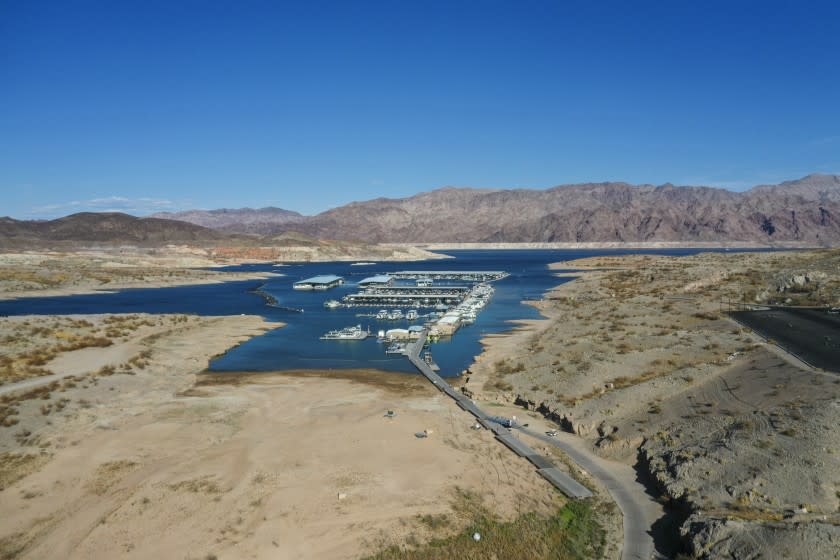Letters to the Editor: Gulf states are wet. The West is in a drought. Where's the water pipeline?

To the editor: The states near the Gulf of Mexico are often flooded with too much water, while the Southwest is suffering a long-term drought. It is time to think outside the box of rain. ("'Unrecognizable.' Lake Mead, a lifeline for water in Los Angeles and the West, tips toward crisis," July 11)
Why not begin a grand national infrastructure project of building a water pipeline from those flooded states to the Southwest?
Specifically, start with a line from the Mississippi River to the Colorado River at Lake Powell, where a seven-state compact divvies up the water. Moreover, we need water in our dams for hydroelectric power as well as for drinking and irrigation, so we would power the Hoover, Glen Canyon and Parker dams.
The main pipeline would span about 1,000 miles from Jackson, Miss., along the southern borders of Colorado and Utah to Lake Powell, at an elevation of about 3,700 feet.
Jeff Drobman, Chatsworth
..
To the editor: While there's no question that the receding waters of Lake Mead are having a detrimental effect on recreation and tourism, the real looming catastrophe is that if the water level of the nation's largest reservoir continues to fall and hits a certain level, the hydroeclectic power plant at Hoover Dam will have to shut down.
When that happens, it won't be just tourists and recreational boaters who will suffer. Millions in the Southwest will literally be left in the dark and blistering heat when there's no longer enough water behind the dam to power the giant electricity-producing turbines.
Rhys Thomas, Valley Glen
..
To the editor: With the threat of brownouts and over-stressed power grids, dwindling water resources in California and the call to reduce consumption by 15%, I want to point out we are not all in this together.
Here in the scorching Coachella Valley, local governments have approved construction of four surf resorts for the very wealthy. Savor that while your lawns are dying. That's not to mention the housing development — again, for the very wealthy — with its own lagoon. Take that, Lake Mead.
And, here in the land of the midnight 90-degree temperatures, we are building our very own ice hockey rink, because there is more than enough electricity to freeze that body of water and keep the arena cold enough to keep the ice from melting.
By the way, none of this includes the incredible carbon footprints about to be stomped on the environment. So come on out for the plastic Marilyn on our dashboard, and stay for the stupendous waste of water, electricity and clean air.
Dave Middleton, Rancho Mirage
This story originally appeared in Los Angeles Times.

